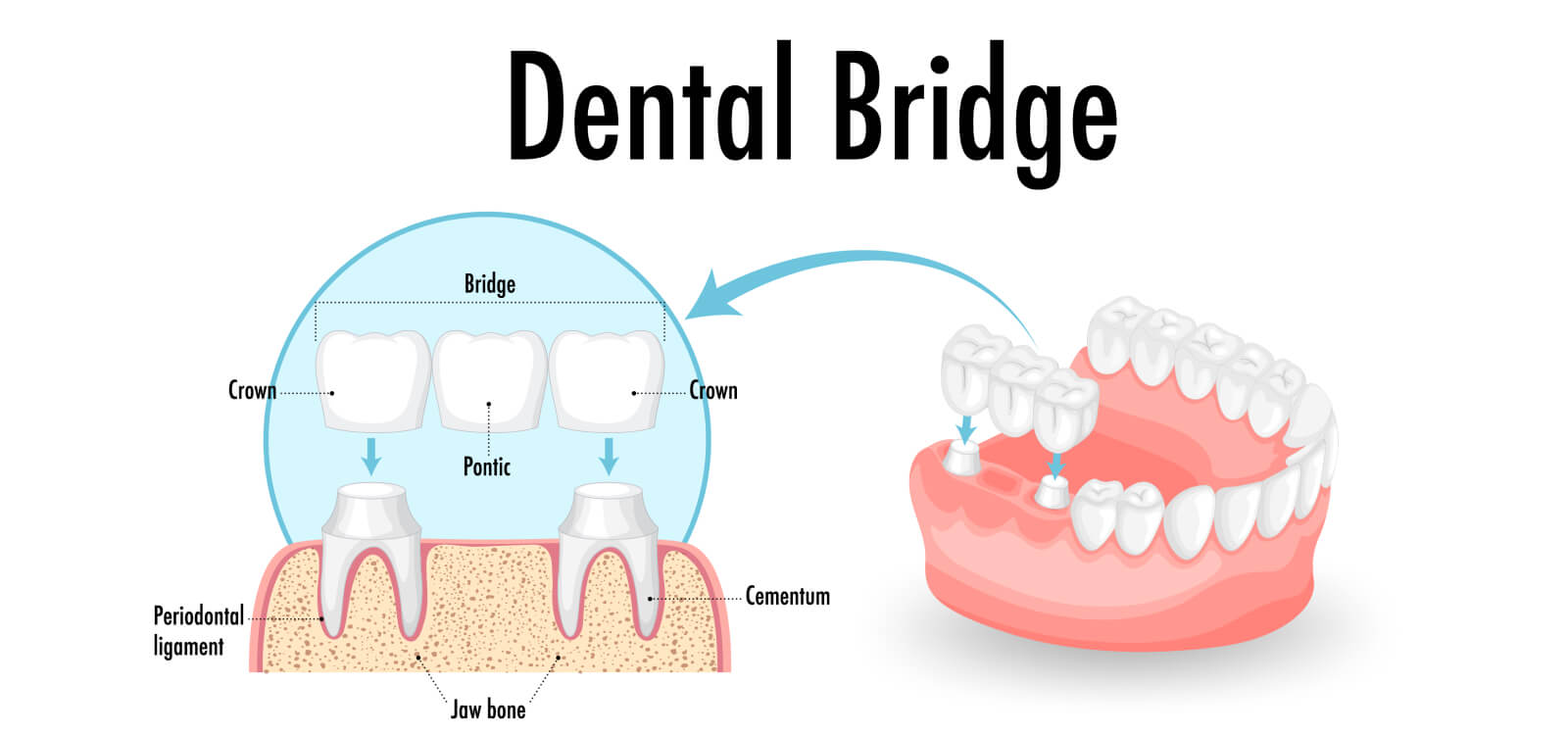METAL CERAMIC BRIDGES
The metal ceramic bridge (known as the porcelain fused to metal bridge) has been a stalwart in the dental world for many years. This dental bridge has been worn by countless numbers of people and is considered a strong and resilient type of bridge. Other options are all ceramic bridges, such as Zirconia bridges which are metal free and prized for their translucent appearance. But it is important that you weigh up the pros and cons of both types of bridge before making your decision.
WHAT IS A METAL CERAMIC BRIDGE?
This bridge is comprised of a metal alloy framework and ceramic crowns which are designed as a replacement for missing or crooked teeth.
There are different types of metal ceramic bridges which include:
- Metal alloy based
- Noble alloy based, e.g. contains gold and copper
- High noble alloy based
Metal alloy based bridges have a silvery grey appearance and are strong, durable and resistant to staining. They are less likely to fracture compared to the all ceramic bridge and have a long lifespan. Noble alloy based bridges
contain a variety of metals such as gold and copper which makes them resistant to tarnishing as well as being a strong and tough type of bridge. Plus gold alloy is tolerated well by the body so no risk of an allergic reaction
and does not damage your natural teeth.
High noble alloy based bridges contain higher percentages of gold or other metals which means a very strong type of bridge. This bridge is able to withstand any amount of pressure or force placed upon it and only requires
a tiny amount of tooth reduction in the preparation stage.
ADVANTAGES OF A METAL CERAMIC BRIDGE
In brief: metal ceramic bridges have great strength and durability. They are known to last for many years and are generally biocompatible. There is only a small risk of an adverse reaction to the metals used in its manufacture. Plus they are hard wearing and unlikely to crack, chip or break, even if you are heavy biter or tend to grind your teeth.
DISADVANTAGES OF A METAL CERAMIC BRIDGE
One disadvantage is that of being able to see a dark grey line around the edge of the gums which you may find less than attractive. Plus some people suffer a reaction to the metals used in the production of the bridge. Metal ceramic bridges also cause a heightened sensitivity to hot and cold liquids in some people. As a result of this many people opt for the all ceramic bridge as these are metal free with no risk of rejection and have a realistic looking appearance. They closely match the color of your natural teeth.
HOW IS A METAL CERAMIC BRIDGE FITTED?
This procedure involves two visits to your dentist: the first visit is the initial consultation followed by an examination of your affected teeth. The dentist will also prepare the affected teeth by cleaning and reshaping them so that they will be an exact fit for the bridge. He/she will also take an impression of your teeth, using a mould containing putty which you bite into. The imprint of your teeth along with any x-rays will be sent away to a laboratory for manufacture of your bridge. This usually takes two to three weeks. You will wear a temporary bridge during this period. The second visit is where you will be fitted with your new bridge. The dentist will check that the color of the crowns in the bridge closely resemble the color of your own teeth before fitting it into your mouth. He or she will check that it is a good fit and is not likely to cause you any discomfort. The crowns will be given a final polish before the bridge is fixed in place with

